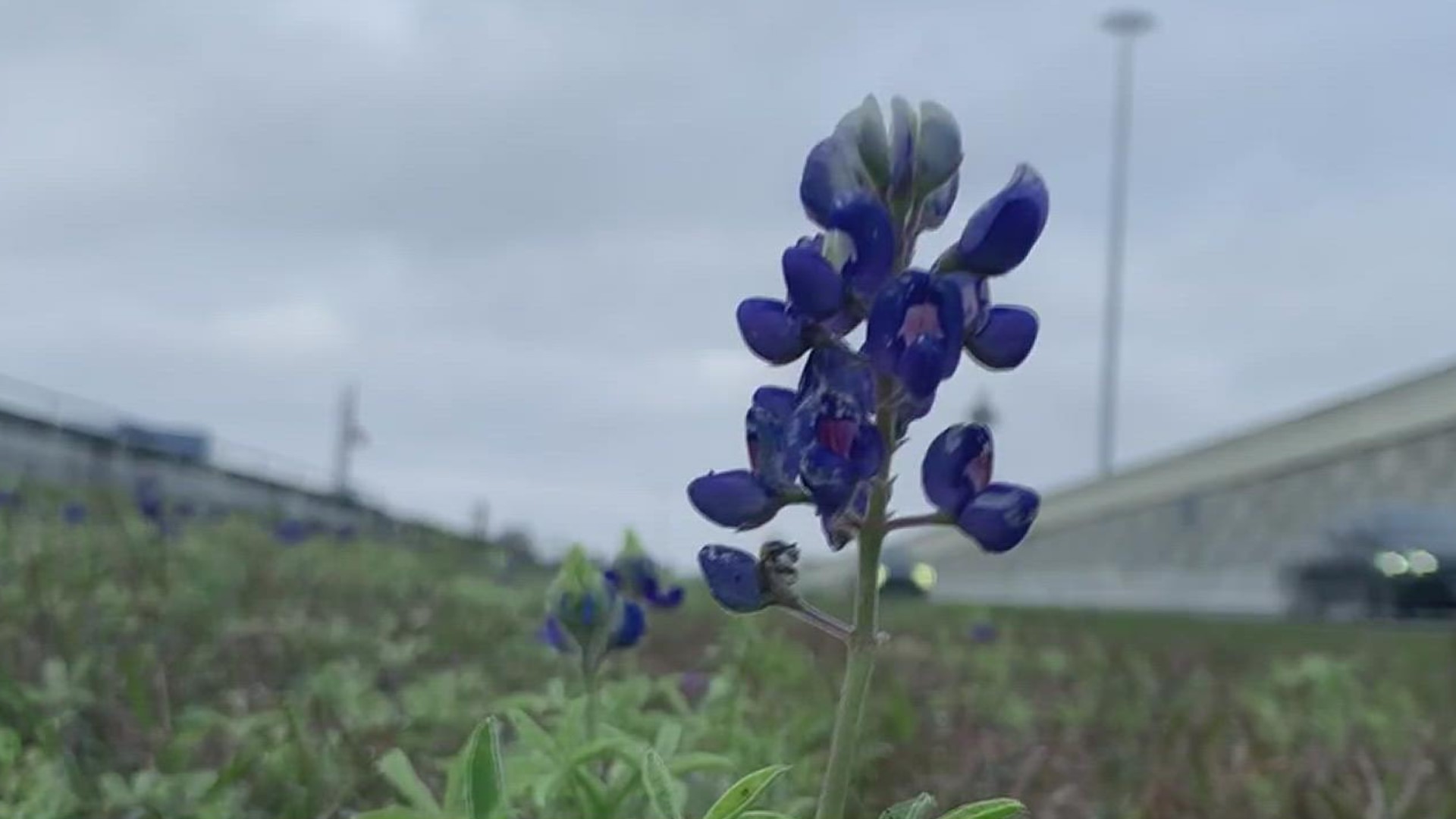CORPUS CHRISTI, Texas — If you drive along Interstate 37 in Calallen -- odds are you can find stands of bluebonnets up and down the highway.
Many people believe that this is a sure sign that spring has sprung.
The bluebonnets popped up over the past week. Now, there aren’t many places along Interstate 37 in Calallen where residents can safely pull over and look at them.
3NEWS met up with Texas A&M AgriLife horticulturist Kevin Gibbs where he explained why the wildflowers only seem to grow along our highways.
"We have wildflowers here because the highway department, TxDOT, does a really good job of seeding and making sure we have bluebonnets and other wildflowers from year to year," he said.
TXDOT actually plants some 30,000 pounds of wildflower seeds around the state each year. The South Texas Botanical Gardens planted their own bluebonnet seeds about four years ago.
Botanical gardens horticulturist Carol Krank gave some advice on how everyone else could grow them from seed.
"If you are ready to sprout them in October or November or December that time period, either get you an inoculant or get you two pieces of sandpaper and rub it between there. So you get at least one little nick in there. That breaks that seed coating because it’s really really hard,“ she said.
The most impressive row of bluebonnets 3NEWS has found was at Texas A&M University-Corpus Christi.
TAMU-CC Project Coordinator for Administrative Operations Melissa Zamora said she knows a thing about the wildflowers history.
"They are also known as El Conejo in Spanish. That means rabbit and that was because of the little white tip representing the white tail rabbit," she said.
3NEWS was told that a maintenance worker bought some seeds and threw them in the planter at the turnaround near the University Center. In just two years, the wildflowers grew to be as impressive as any of the bluebonnet stands in Central Texas.
Zamora said the flowers also attract a number of beneficial insects.
"As I was looking through the bluebonnet patch, I noticed at least five different species. Different types of pollinators like honeybees, dragonflies, butterflies, some caterpillars and ladybugs,” she said.
The bluebonnets have done so well at the Island University that there’s a possibility the school could plant even more around campus.

